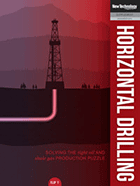Leveraging Learnings
- Details
- Category: Editorial
- Published: 2015-Feb-02
- Author: Maurice Smith
Six years after Alberta announced its target to slow the growth in greenhouse gas emissions by 50 megatonnes per year from business as usual by 2020, it's clear the plan has been a major failure. There has been hardly a dent in the province's fast growing emissions profile, and the silver bullet that was supposed to account for 70 per cent of the slowdown in emissions growth, carbon capture and storage (CCS), is an order of magnitude off target. Said the province's auditor general, Merwan Saher, last summer: “With only two carbon capture and storage projects planned, the total emissions reductions are expected to be less than 10 per cent of what was originally anticipated.”
Of two CCS projects the province supported, Royal Dutch Shell's Quest project is just months away from start-up, as detailed in this issue. The second, the Alberta Carbon Trunk Line, will take CO2 from a fertilizer plant and later from a bitumen refinery under construction. Quest will sequester one million tonnes annually and ACTL will take 1.5-two megatonnes for enhanced oil recovery.
The goal for 2020 is to sequester 35 megatonnes per year. To appreciate the enormity of that task, consider to reach that target, the province would need to bring on line 32 Quest-size projects, commissioning, on average, one every two months for five years.
But while it is obvious the province won't meet that goal, it hasn't been a total loss. There are at least two lessons learned that the oilpatch can profit by: that with the right policy, it can gain social licence to operate, and that the cost of future projects will fall, as predicted.
Shell's Quest project is a textbook example of how to use public engagement to build trust, alleviate safety concerns and gain public support. (While a spill of CO2 may seem innocuous, at concentrated levels it can be fatal. A rare large-scale outgassing of naturally occurring CO2 from Lake Nyos in Cameroon in 1986 suffocated some 1,700 people and 3,500 livestock.) In this case, gaining social licence was a particularly important lesson for Shell, after the company was forced to quash a similar project as a direct result of its failure to earn that licence.
Prior to Quest, Shell planned to construct a CCS project in Barendrecht, the Netherlands. While it received federal government support, Shell only approached local governments and stakeholders after attaining regulatory approval—which did not go down well with the locals.
It was a situation investigated by the Alberta-based Pembina Institute, which interviewed project developers and produced a report detailing successful public engagement. Of the Barendrecht example, it concluded: “Local politicians and stakeholders opposition to the project was so strong that it was eventually cancelled. The failure of this top-down style approach to project planning and development was recognized by the Shell Quest team, who made sure to liaise with local community members about the technical details of the project as well as develop long-term trust-based relationships.”
With Quest, Shell walked the talk, so to speak, becoming proactive from the start, with consultations with local stakeholders long before funding was awarded or regulatory applications submitted. It consulted on several levels, from community meetings to one-on-one discussions and “world café” sessions to create a “safe place to talk” and receive honest feedback. And it listened—for example, the pipeline route was modified over 30 times to incorporate feedback. As a result of its efforts, local support “remains high,” Pembina found.
On the costs side, the project remains on budget and ahead of schedule, and learnings from its construction are expected to create cost savings for future projects, as was the case in Saskatchewan, where October’s completion of the Boundary Dam CCS project is expected to lead to 20-30 per cent savings on future similar projects.
Alberta contributed $1.3 billion to the Quest and ACTL projects—a princely sum considering how far short it fell in reaching its 2020 target. It is obvious a re-evaluation of its CO2 emission reduction strategy is in order. At least there are a few lessons it can take away from its existing strategy as it moves to implement a new one this year.
Editor's View | December 2014
- Details
- Category: Editorial
- Published: 2014-Nov-28
- Author: Maurice Smith
Getting In Front Of The Issue
There is little doubt the twin technologies of horizontal drilling and multistage fracturing have turned the North American oil and gas industry on its head, turning what many saw as a sunset industry into a new economic dynamo that has put the continent on the road to energy self-sufficiency.
Editor's View | November 2014
- Details
- Category: Editorial
- Published: 2014-Nov-01
- Author: Maurice Smith
Only Getting Started?
It seems that almost daily we hear about old records being broken as the unconventional oil and gas resource bonanza continues to thrive. U.S. plays like the Bakken in North Dakota and Eagle Ford in Texas are pumping at record rates while the oilsands are setting new standards for both in situ production and overall output. And even as natural gas prices remain low and drilling shifts to oil and wet gas plays, natural gas output from resource plays like the Marcellus in the northeast U.S. continue to surprise on the up side.





 Editorial
Editorial 

